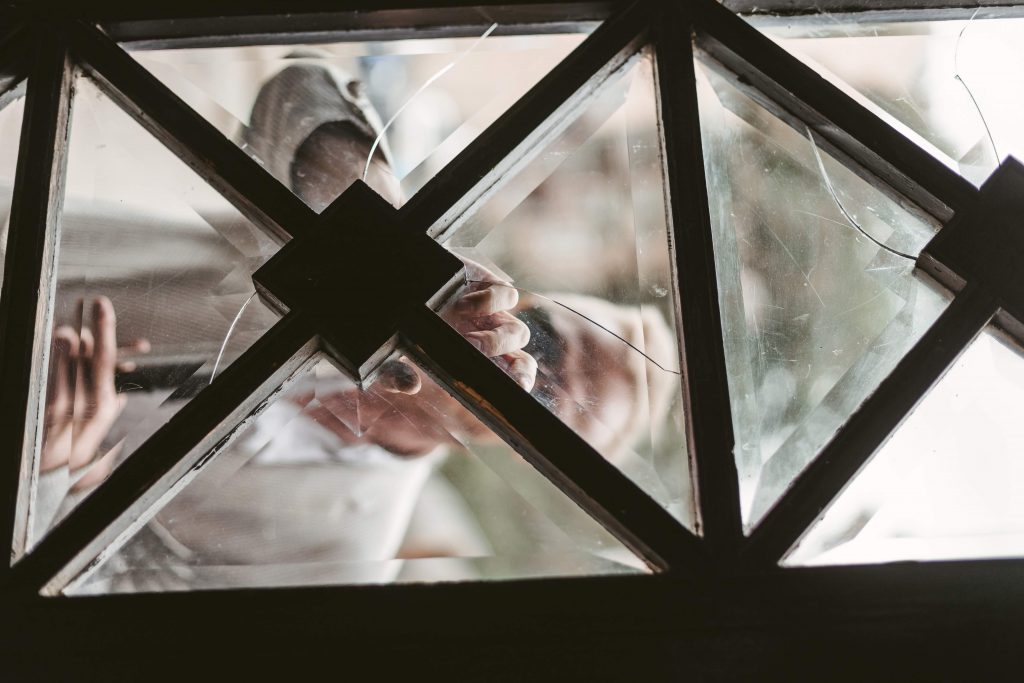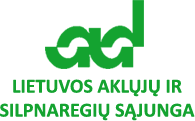Kauno Architektūros Festivalis
(IN)visible Architecture
Kauno menininkų namai, Putvinskio g. 56
DATA: 2019-11-26
LAIKAS: Pristatymas 17:00 val., Paskaita 18:00 val.

The “(In)visible Architecture” project initiated by architect Rasa Chmieliauskaitė and Kaunas Artists’ House (KMN) aims to present the development of Lithuanian architecture from Gothic to Postmodernism to the blind and the visually impaired using non-visual means. During the exhibition, educational publications will be presented to the public, which will reveal the essence of architectural styles to the seeing and the visually impaired, made according to the methodology developed by way of qualitative research.A
The project “(In)visible Architecture”, initiated by architect Rasa Chmieliauskaitė and Kaunas Artists’ House (KMN), was launched in July, seeking to present the development of Lithuanian architecture from Gothic to Postmodernism to the blind and the visually impaired using non-visual means. This project will be developed in three phases. In July and August, five sites representing different architectural styles are visited in Kaunas: House of Perkūnas, Pažaislis Church and Monastery Ensemble, Department of Rare and Old Prints of Kaunas County Public Library (former Chamber of Industry, Commerce and Crafts), the Ninth Fort Museum and Monument, Mykolas Žilinskas Art Gallery of M. K. Čiurlionis Art Museum.
Ekskursijų metu vykdomas kokybinis tyrimas kartu su aklųjų ir silpnaregių bendruomenės nariais-savanoriais architektų komanda, akcentuojant kontekstinių žinių ir jutiminės patirties sintezę: nagrinėjamas kultūrinis ir socialinis architektūros stiliaus iškilimo laikotarpis, tiriamos idėjos ir vertybės slypinčios už architektūrinių sprendimų, žvelgiant giliau už estetinę išraišką. Pagrindiniai šių ekskursijų klausimai: kaip architektūrą pažinti gali nematantys ir ko nepastebi matantieji? Pasak R. Chmieliauskaitės, „projektą įkvėpė suvokimas, kad pats tingiausias aplinkos pažinimo būdas yra regėjimas, kad nuteisti architektūros objektą pakanka kelių sekundžių, o istoriniai faktai ar detalių profesiniai terminai negarantuoja objekto „skaitymo“ malonumo.“
Tours include qualitative research with volunteer members of the community of the blind and visually impaired, and a team of architects, emphasizing the synthesis of contextual knowledge and sensory experience: exploring the cultural and social period of appearance of the architectural style, exploring ideas and values behind the architectural solutions, looking beyond the aesthetic expression. The main questions of these tours: how can architecture be seen by the blind, and what is unnoticed by the seeing? According to R. Chmieliauskaitė, “the project was inspired by the notion that the laziest way to get to know the environment is by vision, and that it only takes a few seconds to judge an architectural object, while the historical facts or professional terms of detail do not guarantee the enjoyment of “reading” the object.”
Each research tour is followed by workshops in the same spaces, which will look for an innovative and resonant way of presenting architecture to the blind using design thinking methodology. The research methodology was prepared and consultation on academic issues were provided by art researcher Justinas Kalinauskas. According to R. Chmieliauskaitė, after the most important stages of architectural development in Lithuania were identified with the help of architectural scientists, architectural objects were carefully screened according to accessibility, public function, expression of style, prominence and textuality. Further opportunities for cooperation were also taken into account: “I first took on historical architecture to lay the groundwork for further exploration, to establish context. I am delighted that the institutions, which own the buildings, gladly welcomed our team,” – stressed R. Chmieliauskaitė.
This is not the first project for Kaunas Artists’ House that emphasizes the accessibility of culture. “Kaunas Artists’ House is a cultural institution operating for 48 years, presenting a wide range of professional art to different audiences. Over the last couple of years we have devoted a lot of attention to the development of our audiences. In early 2018, we initiated cooperation with Kaunas community of the deaf and hard of hearing, some of the content of the KMN website is also translated to Lithuanian sign language,”- said Rūta Stepanovaitė, head of KMN. “This year, we are expanding the range of services available to visually impaired visitors, and opening the doors of KMN to yet another community that may be interested in diverse creativity. I am pleased that projects of similar nature involve very different participants: artistic and cultural professionals, volunteers, people with disabilities – this is how knowledge is exchanged and we get a chance to view the world around us from a different perspective.”Presentation models created during the workshops will be applied in educational tools – publications that will operate on several levels. These publications will serve as an introduction to understanding architecture and a representational tool for the blind, while it will help the blind to gain a deeper feeling and understanding of architecture in ways other than sight. According to Lina Puodžiūnienė, LASS cultural and art project manager, “Of course, the most comprehensible means of presenting architecture to the blind, is a model. It is regrettable that they are very few in Lithuania. Therefore,it is to be welcomed that every year more and more creators seek new forms of creative expression and tools to improve access to art for the blind. I think the strength of this project is direct communication: between the blind and the seeing, the creator and the observer, the professional architect and the man who gets to know the world through sound, touch, smell. I believe that this communication, which extends the boundaries of human knowledge, is of great value to both sides.” There will also be a lecture to draw the attention of architects and designers to the importance of designing accessible construction works. The public presentation of the results of this project and an information lecture will take place in Kaunas Artists’ House in November.
AUTHOR OF THE PROJECT
– Rasa Chmieliauskaitė
PARTNERS:


SPONSORS:

